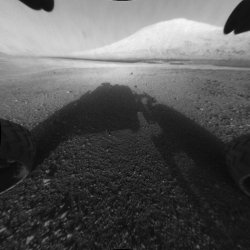Trajan
conscientia mille testes
Yes I saw QW's thread, this is more of the how did it land and thank god it did
I got this link from a guy who works at Cal Tech...he helped put this together.
nice job actually, the 6 minute film goes by really quick, and provides an excellent representation of the landings intricacies and management the combination of timing and moving parts, 14 minutes removed and in many instances commanded by 'skynet' is very impressive....
is very impressive....
This is bound to be an under appreciated but brilliant achievement of science, engineering and manufacturing. Nasas last hurrah sadly...
Video: Curiosity's Seven Minutes of Terror - NASA Jet Propulsion Laboratory

I got this link from a guy who works at Cal Tech...he helped put this together.
nice job actually, the 6 minute film goes by really quick, and provides an excellent representation of the landings intricacies and management the combination of timing and moving parts, 14 minutes removed and in many instances commanded by 'skynet'
This is bound to be an under appreciated but brilliant achievement of science, engineering and manufacturing. Nasas last hurrah sadly...

Video: Curiosity's Seven Minutes of Terror - NASA Jet Propulsion Laboratory



